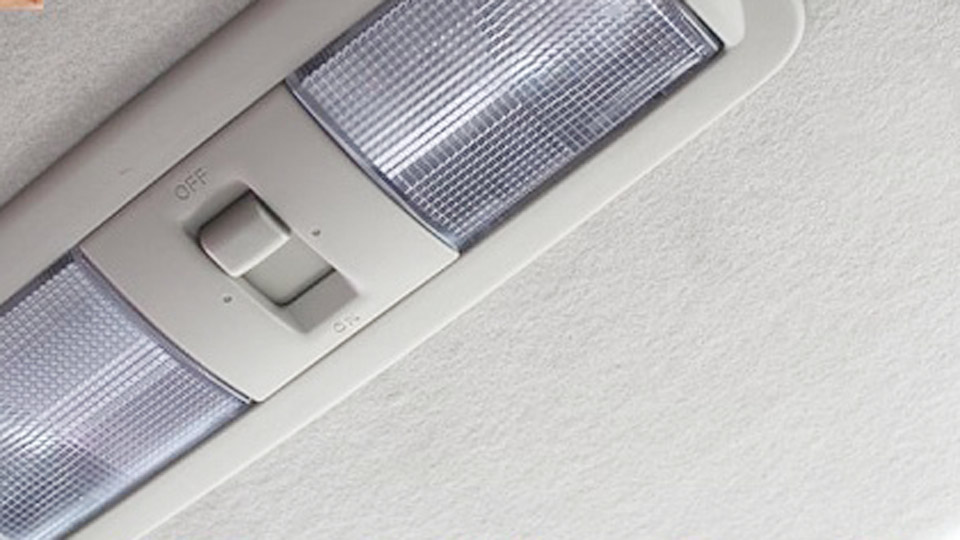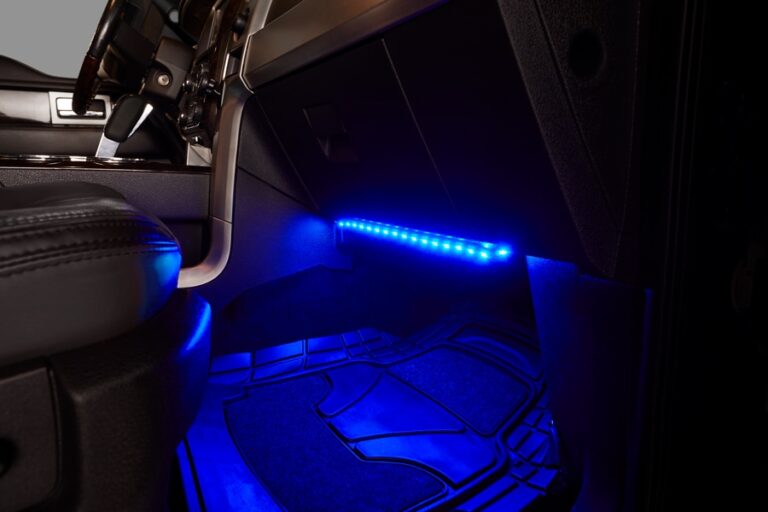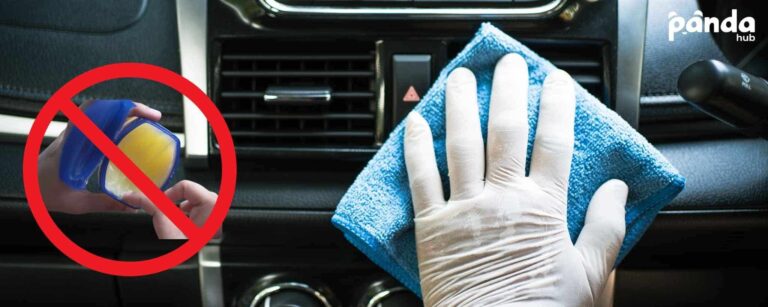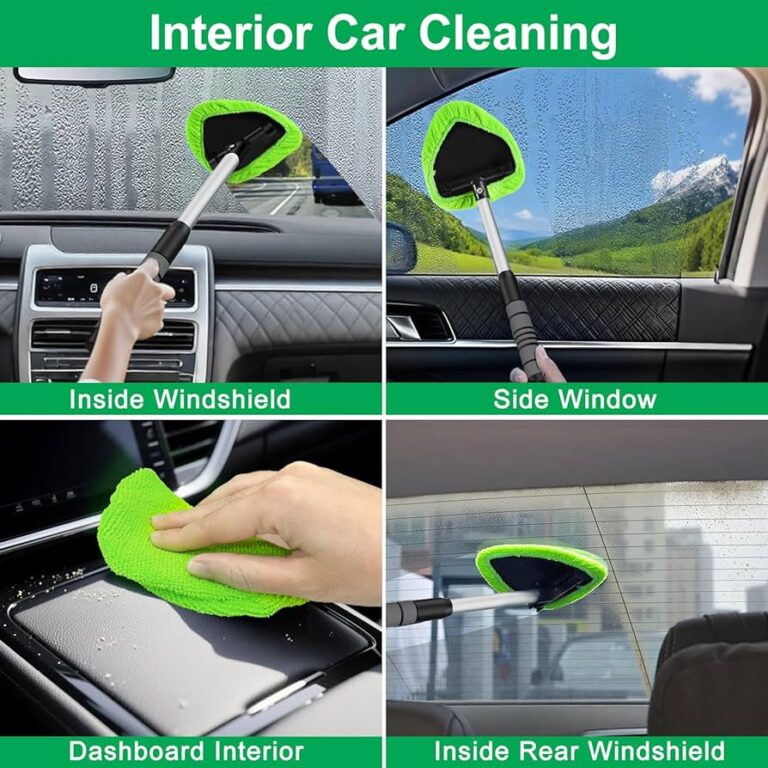You know that feeling when you hop into your car at night, shut the door, and expect the interior lights to glow automatically—only to be left in the dark? It’s one of those little issues that seems minor at first, but it can be frustrating and even unsafe when you’re trying to find something or check your dashboard at night. I often get asked, “Why Are My Car Interior Lights Not Turning On Automatically?” and over the years, I’ve seen all sorts of causes—from simple blown fuses to faulty door switches.
These lights may not affect how your car runs, but they do play an important role in convenience and safety. I can’t tell you how many times I’ve had customers come into the shop thinking it’s a major electrical problem, when really it was a quick fix they could’ve handled themselves.

Image by cararac
Your Car’s Interior Lighting System
Before we jump into fixes, let’s break down how this setup works. Your car’s interior lights are part of a simple yet clever electrical circuit tied to door sensors, switches, and sometimes the vehicle’s computer. When you open a door, a switch (usually in the door jamb) signals the system to power up the bulbs—dome light overhead, map lights up front, maybe even puddle lights under the doors on newer models.
The key players? Door ajar switches detect when a door’s open. Fuses and relays protect and control the power flow. Wiring connects it all, and in modern cars, a body control module (BCM) oversees everything like a digital traffic cop. Bulbs are the obvious end point, but since your lights work manually (I’m assuming, based on common complaints), we’re likely dealing with the automatic trigger side.
Why does this matter for safety and reliability? A faulty system can leave you in the dark literally, increasing accident risks while entering or exiting. Cost-wise, ignoring it might lead to bigger repairs—I’ve seen simple switch failures cascade into BCM issues costing over $500. For fuel efficiency, if lights stay on undetected, you’re sipping extra juice from the battery, which strains the alternator over time.
In my shop, I always start with the basics: Check if the dimmer switch isn’t turned all the way down or if someone’s fiddled with the override. But if that’s not it, let’s troubleshoot the real spares.
Common Reasons Your Interior Lights Won’t Turn On When Doors Open
This is where most searches lead folks like you—straight to the symptoms. From what I’ve seen in countless diagnostics, the automatic function fails due to a handful of issues. I’ll cover each, focusing on the parts, signs they’re toast, and replacement know-how.
Faulty Door Jamb Switch: The Most Common Culprit
Ah, the door jamb switch—also known as the door ajar switch. This little guy is a plunger-style button mounted in the door frame. When you close the door, it depresses the switch, cutting power to the lights. Open the door, it pops out, and voila, lights on. It’s simple mechanics meets electrics, found on nearly every US-market vehicle from Ford F-150s to Toyota Camrys.
Common problems? These switches wear out from constant use—think thousands of door cycles. Dirt, moisture, or corrosion can gum them up, especially in rainy states like Washington or salty winter roads in the Midwest. Signs of failure: Lights don’t come on automatically, but manual override works; door ajar warning on the dash might flicker or stay on; or inconsistent behavior across doors.
You need to replace it when testing shows no continuity (more on that later) or visible damage. I’ve pulled switches caked in grime that looked like they’d been through a mud bath—common on off-road Jeeps.
OEM vs aftermarket: OEM parts from brands like Ford’s Motorcraft or GM’s ACDelco ensure perfect fit and longevity, backed by a 1-2 year warranty. But they’re pricier—expect $20-50 per switch at dealerships. Aftermarket options from Dorman or Standard Motor Products are cheaper ($10-30) and widely available at AutoZone or O’Reilly in the US. They’re fine for most daily drivers, but quality varies—I’ve had Dormans last years on a client’s Silverado, while a no-name brand failed in months.
Here’s a quick comparison table for popular US brands:
| Brand | Type (OEM/Aftermarket) | Price Range (USD) | Pros | Cons | Common Compatibility |
|---|---|---|---|---|---|
| Motorcraft | OEM | $25-45 | Exact fit, reliable, warranty | Higher cost, slower availability | Ford, Lincoln models like F-150, Explorer |
| ACDelco | OEM | $15-40 | Durable, GM-approved | Limited to GM vehicles | Chevy Silverado, GMC Sierra |
| Dorman | Aftermarket | $10-25 | Affordable, easy to find | Variable quality, shorter lifespan | Universal fit for many US makes |
| Duralast (AutoZone) | Aftermarket | $12-30 | Budget-friendly, store warranty | May not match OEM specs perfectly | Honda Accord, Toyota Camry adaptations |
Installation tips: Safety first—disconnect the battery to avoid shorts. Tools needed: Screwdriver, multimeter for testing. Pop off the door panel trim (careful with clips—they break easy), locate the switch (usually threaded or clipped), unplug the wire, unscrew, and swap. Torque to spec—overtightening cracks the housing. Common mistake: Not cleaning the jamb area; debris causes repeat failures. Pro tip: Test all doors—often one bad switch affects the whole system.
I once had a guy bring in his 2018 Ram 1500 swearing the battery was dead because lights wouldn’t auto-on. Turned out the driver’s door switch was stuck from a coffee spill. A $15 Dorman switch and 20 minutes later, he was good. Saved him from buying a new battery unnecessarily.
Blown Fuses or Faulty Relays: Quick and Cheap Fixes
Next up, the unsung heroes: fuses and relays. Fuses are thin metal strips in your car’s fuse box that blow to protect circuits from overloads. Relays are electromagnetic switches that handle higher currents for the lights. They’re tucked in the under-dash or engine bay fuse panel—check your owner’s manual for locations, varying by make like under the hood in Fords or glovebox in Hondas.
Signs of trouble: All interior lights dead automatically, but other electrics fine; or intermittent flickering. Fuses blow from shorts, like water ingress or rodent-chewed wires (common in garage-stored cars). Relays fail from heat cycling or age.
Replace when a visual check shows a broken fuse filament or relay doesn’t click when powered. In the US, fuses are pennies—$1-5 for a pack at Walmart or NAPA. Relays run $10-20.
OEM vs aftermarket: Stick to OEM for relays if possible—Bosch or Delphi for US brands like Chrysler. Aftermarket from Bussmann or Littelfuse are solid and half the price. Pros of OEM: Better heat resistance; cons: Availability might mean a dealer trip. Aftermarket pros: Ubiquitous at parts stores; cons: Cheap imports can fail fast.
Comparison table:
| Part | Brand | Type | Price Range (USD) | Pros | Cons | Compatibility Examples |
|---|---|---|---|---|---|---|
| Fuse | ACDelco | OEM | $2-5/pack | Reliable, exact amp rating | Slightly pricier | GM vehicles |
| Fuse | Bussmann | Aftermarket | $1-3/pack | Cheap, widely available | Quality varies by batch | Universal |
| Relay | Bosch | OEM/Aftermarket | $15-25 | Durable, German engineering | Costlier | Ford, VW models |
| Relay | Standard | Aftermarket | $8-15 | Affordable, US-made options | May buzz or fail sooner | Toyota, Honda |
Installation: Pull the old fuse with pliers (never fingers—hot risk), match amp rating (e.g., 10A), plug in. For relays, similar—unclip and swap. Mistake: Using wrong amp fuse; blows immediately or risks fire. Safety: Battery disconnected. Anecdote: On a rainy day, a customer’s Toyota RAV4 had water-damaged fuses from a leaky sunroof. Swapped a $2 fuse, and lights popped on—simple, but she thought it was the alternator.
Wiring Issues: When Connections Go Bad
Wiring harnesses are the veins of your lighting system, carrying power from battery to switches and bulbs. Over time, they fray, corrode, or get pinched—especially in door boots where flexing happens constantly.
What it does: Transmits signals without drop. Problems: Breaks from accidents, rodent damage, or age; corrosion in humid areas like Florida. Signs: Lights work on some doors but not others; dim or flickering auto-on.
Replace sections when continuity tests fail—use a multimeter to check resistance. Cost: Wire kits $10-50, solder/heat shrink $5.
OEM harnesses are pricey ($50-200) but plug-and-play. Aftermarket from Painless Wiring or generic rolls at Home Depot work for repairs—cheaper but require splicing.
Pros/cons: OEM—seamless integration, long life; aftermarket—customizable, low cost but labor-intensive.
Tips: Trace wires with a diagram (Chilton manuals help). Common mistake: Poor splices leading to shorts. Safety: Tape ends to prevent sparks. Insight: Fixed a chewed harness on a parked Subaru Outback—rats love soy-based insulation in newer cars. A $20 repair kit saved a $300 dealer bill.
Dimmer Switch or Body Control Module Problems
The dimmer switch on your dash controls brightness and sometimes overrides auto. BCM is the brain in modern cars (post-2000s), managing multiple systems.
Dimmer: A rheostat that adjusts voltage. Fails from wear or dirt. Signs: Stuck in off position.
BCM: Rare but serious—glitches from water or voltage spikes. Signs: Multiple electrical oddities.
Replacement: Dimmer $20-60 (OEM like Mopar for Dodge); BCM $100-500 plus programming.
OEM essential for BCM—aftermarket risky. For dimmers, aftermarket fine.
Table for dimmers:
| Brand | Type | Price | Pros | Cons | Models |
|---|---|---|---|---|---|
| ACDelco | OEM | $30-50 | Precise control | Expensive | Chevy |
| Dorman | Aftermarket | $15-30 | Easy install | Less smooth | Universal |
Install: Dash disassembly—careful with airbags. Anecdote: A 2020 Hyundai Tucson BCM reset fixed lights after a jump-start gone wrong.
Tips for Identifying Genuine vs Fake Spare Parts
In the US, fakes flood online markets. Check packaging for holograms, correct spelling (no “Motocraft” knockoffs). Buy from trusted like NAPA—avoid shady eBay deals. Genuine parts have crisp logos, serial numbers. Fakes feel cheap, mismatched colors.
Tools: Multimeter ($20 at Harbor Freight), trim tools, gloves.
Maintenance: Clean switches yearly, check fuses seasonally.
Conclusion
If your interior lights aren’t turning on automatically, start simple: switches, fuses, wiring, then modules. Prioritize safety and reliability—opt for quality parts to avoid repeats. Smarter decisions? Test before buying, match vehicle specs via VIN at parts stores.
FAQ
How Do I Test a Door Jamb Switch Myself?
Grab a multimeter, set to continuity. Disconnect switch, probe terminals—should beep when plunger out, silent when in. No beep? Bad switch.
What’s the Difference Between Dome and Courtesy Lights?
Dome is overhead; courtesy are door-specific. Both tie into the same auto system, but courtesy often fail first from door use.
Can LED Bulb Upgrades Cause Auto Light Issues?
Yes, sometimes—LEDs draw less power, confusing modules. Use CANbus-compatible LEDs from Sylvania ($10-20) to avoid.
How Often Should I Replace Interior Light Fuses?
Only when blown, but inspect yearly. Packs last forever if no underlying shorts.
Is It Safe to Drive Without Auto Interior Lights?
Technically yes, but risky at night—manual on works, but fix ASAP for convenience and resale value.



